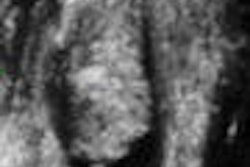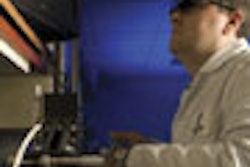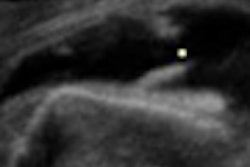Contrast-enhanced stress echocardiography is associated with only a very small risk of major adverse events, with no significant difference in risk between patients receiving and not receiving contrast, according to a retrospective study performed by the Methodist DeBakey Heart and Vascular Center in Houston.
"Despite having a higher cardiac risk profile in the contrast group, there was still no statistically significant difference in serious adverse events or serious arrhythmias," said Dr. Kamran Shaikh, an echocardiography fellow. He presented preliminary findings from the research at the 2008 American Society of Echocardiography (ASE) meeting in Toronto.
Following the U.S. Food and Drug Administration's (FDA) decision last year to issue a black box warning on the safety of echocardiography contrast agents, the Methodist DeBakey researchers sought to evaluate the safety profile of these agents in patients undergoing stress echocardiography with contrast for endocardial enhancement. The team performed a retrospective review of digital records from 2002 through 2007 at the Methodist DeBakey Heart and Vascular Center, including 3,121 consecutive patients who had undergone stress echocardiograms.
Of the patients, 55.8% received a dobutamine study, while 44.2% had an exercise stress study. The researchers evaluated the adverse events of patients who had undergone stress echocardiography with contrast versus events in a noncontrast cohort. They noted patient demographics, contrast use, hemodynamics, electrocardiogram and wall motion changes, symptoms, and arrhythmias during and following the stress studies up until discharge.
Of the 3,121 patients, 1,879 (60%) received contrast; 95% of these received the Definity contrast agent (Lantheus Medical Imaging, North Billerica, MA). The researchers found that contrast utilization was higher among inpatients (77%) and those receiving dobutamine (78%) and bicycle stress exams (73%).
Compared with the noncontrast group, the patients receiving contrast were older (61 ± 13 versus 56 ± 15 years) and had a higher body mass index (30.2 ± 8.4 versus 27 ± 5.5). In addition, they had a more depressed left ventricular ejection fraction of less than 50% (13% versus 8%), according to the researchers. All differences were statistically significant (p < 0.001).
The study group also found that while the contrast-enhanced group achieved a lower double product of systolic pressure and heart rate (22,901 ± 5,232 versus 24,365 ± 5,453, p < 0.001), the prevalence of abnormal wall motion in the contrast-enhanced group during stress was higher (28% versus 22%, p < 0.001).
In other findings, the contrast group had a higher incidence of back pain (0.9% versus 0.08%, p < 0.001) and chest pain (11.5% versus 8.5%, p = 0.009). However, the noncontrast group had more shortness of breath (17.2% versus 12.9%, p < 0.001).
As for adverse events, there was one uncomplicated acute myocardial infarction and one anaphylactoid reaction in the contrast group, and none in the noncontrast group (p = 0.8 for both).
The researchers also found no difference in clinically significant arrhythmias (defined as atrial fibrillation/flutter, accelerated idioventricular or junctional rhythm, supraventricular tachycardia, sustained or nonsustained ventricular tachycardia, or ventricular fibrillation) between the contrast group (2.1%) and the noncontrast group (1.9%, p = 0.8).
There also was no sustained ventricular tachycardia, ventricular fibrillation, cardiac arrest, or death in either group, Shaikh added.
Given that such an important tool in the arsenal of cardiology had more or less been taken away by the FDA black box warning last year, this type of data demonstrating the strong safety profile of these agents is quite profound, Shaikh said.
"It allows clinicians, sonographers, and echocardiography laboratories to start using contrast again," he said. "And that's what we've done in our lab. Since the black box contraindications have been lifted, our contrast utilization has increased significantly. And I hope nationwide it will continue to increase."
By Erik L. Ridley
AuntMinnie.com staff writer
July 9, 2008
Related Reading
More study of heart imaging agent risks urged, June 25, 2008
Concerns remain over heart imaging agents: U.S. FDA, June 20, 2008
ASE welcomes echo contrast labeling change, May 22, 2008
Lantheus updates Definity label, May 13, 2008
Ultrasound contrast agents appear safe despite FDA warning, April 1, 2008
Copyright © 2008 AuntMinnie.com




















